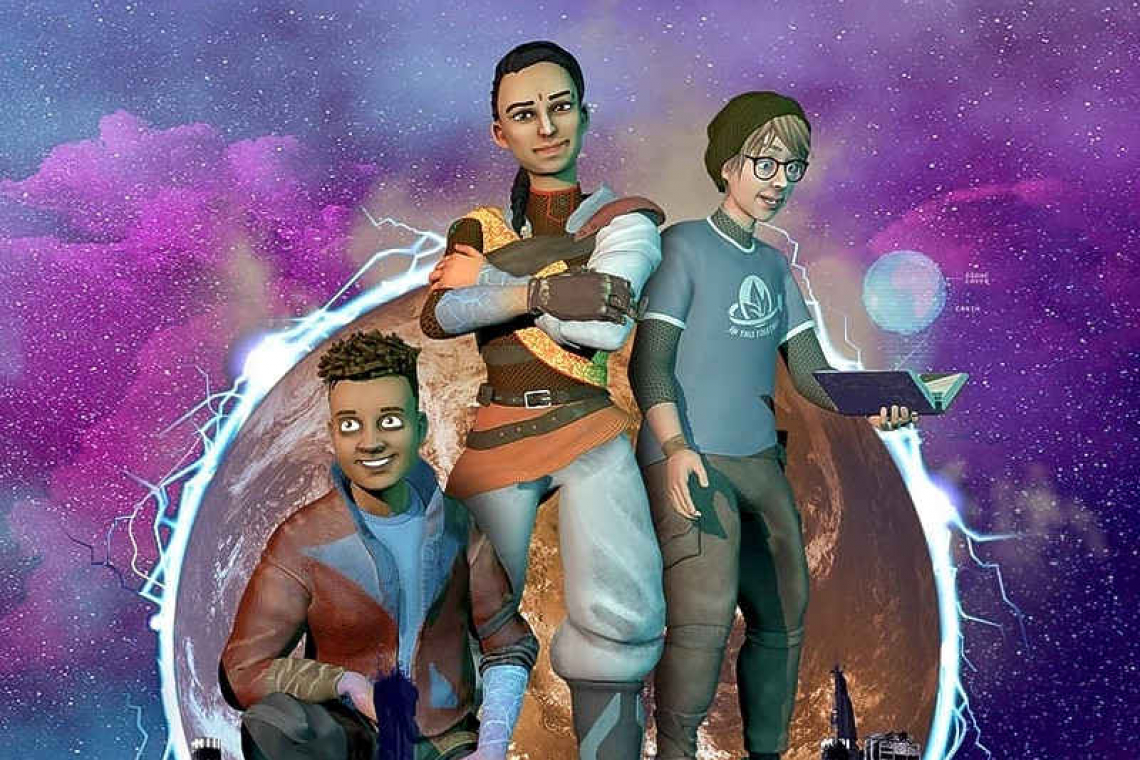Photo: The animated main characters featured in UNEP’s free educational toolkit, available and easily accessible to teachers all over the world. Image from UNEP.org.
* New free online teacher toolkits and lesson plans based on the success of UNEP’s Ozone Secretariat’s Reset Earth animation and video game
* Targeting Tweens by adopting animation and gamification to create innovative online lessons to raise awareness on ozone layer and environmental protection
* Available online in digital and print format for universal access
In support of World Education Day [which was observed on Monday, 24 January] and teachers looking for new material on environmental awareness and protection, the United Nations Environment Programme’s Ozone Secretariat has tapped into animation and gamification to develop innovative teacher lesson plans and student workbooks.
Targeting tweens (8-12-year-olds) and using the Reset Earth short animations and storylines, the protagonists Knox, Terran, and Sagan bring the story of how the ozone layer was saved to life. The toolkits are available online and free of charge on the Ozone Secretariat’s education platform.
Specifically designed to cater for the increased demand in quality and innovative virtual learning material, the toolkits have also been adapted for print and the episodes are available in a comic format for universal access.
The first phase of the toolkits aims to provide a springboard into environmental science to help educate, raise awareness and inspire action among young people about the importance of the ozone layer, and the continued need to protect it. Phase II, targeting teenagers, is under development and will be launched soon.
“I cannot stress the importance of continued ozone layer protection and the story of the Montreal Protocol enough in this time of an acute climate crisis,” said the Ozone Secretariat’s Executive Secretary, Meg Seki. “It is a story of hope for our younger generation. It is also a reminder to us all to strive for global cooperation and partnership to build and implement global environmental policies based on science.”
The ozone layer is an invisible shield that exists 15-35 km above the Earth’s surface in the stratosphere, protecting humans, animals, plants and vital ecosystems from harmful UV radiation.
In the 1980s, scientists discovered a huge hole in the ozone layer, caused by chlorofluorocarbon (CFC) emissions. This man-made chemical was utilized in many products –aerosol cans, fridges, air conditioners, insulating foams, fire extinguishers, solvents and many other products.
Alerted by scientists, world leaders and policy makers worked together, taking urgent steps to control and phase out CFCs and other ozone-depleting substances globally. The Montreal Protocol on Substances that Deplete the Ozone Layer was adopted in 1987. Since then, it has been universally endorsed by 197 nations and the European Union, making it one of the most successful environmental treaties of all time. Phasing out ozone depleting substances have also contributed significantly to curbing climate change because those substances are highly potent greenhouse gases.
But restoring the damaged ozone layer and returning it to pre-1980 levels will take decades. It will require constant vigilance and protection by the Montreal Protocol community and generations to come. The environmental challenges that the next generation of young people face are many. But the story of the ozone layer and the global collaboration to protect it, is a story of hope. The Montreal Protocol is a reminder that when the world comes together in cooperation and partnership, and guided by science, mankind can solve major global crises.
Press release by UNEP. The toolkits are available online and free of charge on the Ozone Secretariat’s education platform: visit https://ozone.unep.org/education-portal. Link includes full course overview, worksheets, animated videos and storybooks.
Some feedback from teachers, as shared on the Secretariat’s website:
“Reset Earth is a highly instructive and valuable resource. The engaging and relatable characters draw in children who might otherwise be intimidates or put off by the subject matter.” – Caroline Watkinson, Tyndale Community School, Oxford, United Kingdom
“This project is the perfect addition to the classroom as it can be used to educate younger people on the ozone layer and the current problems that mankind is facing.” – Abby Woolard, Teacher in Port Elizabeth, South Africa
“Love the ideas that this proposes, gives teachers a nice entry point into actionable science.” – Clayton Ellis, Peel School Board, Ontario, Canada
“Students will be able to better imagine the important science at play through the eyes of the characters. It was smart to attach this issue to a unique group of characters because the ozone issue speaks to the complex way that people make decisions – students and these characters are also deciding what’s best.” – Adam Robb, Calgary Board of Education, Calgary, Canada







